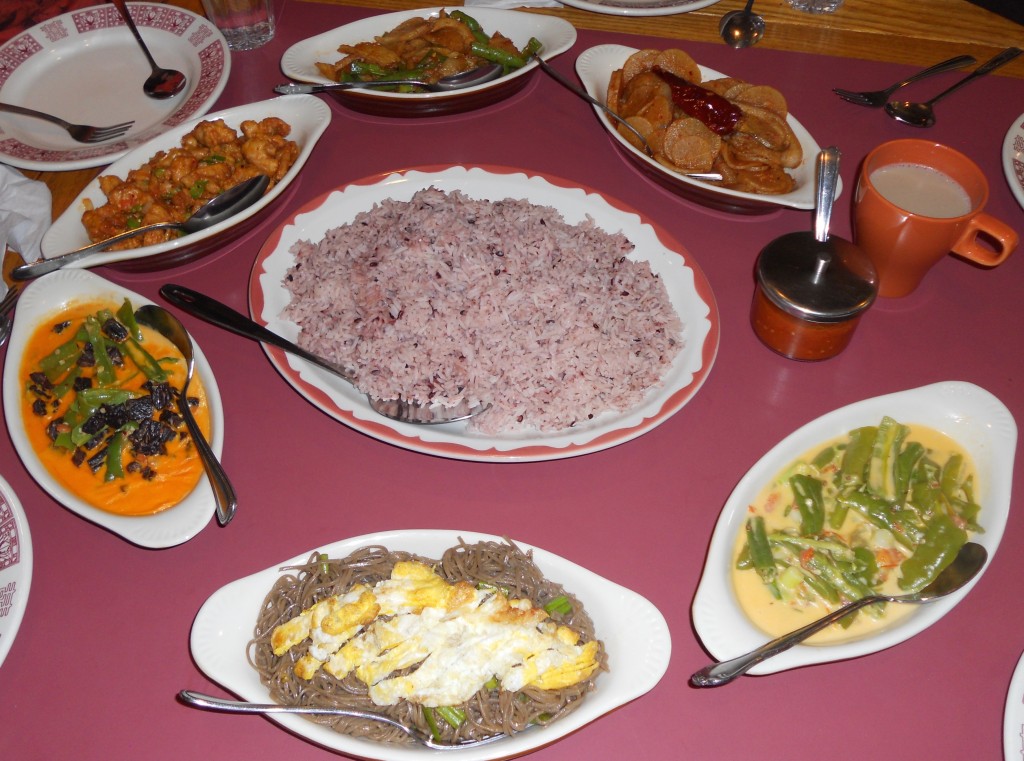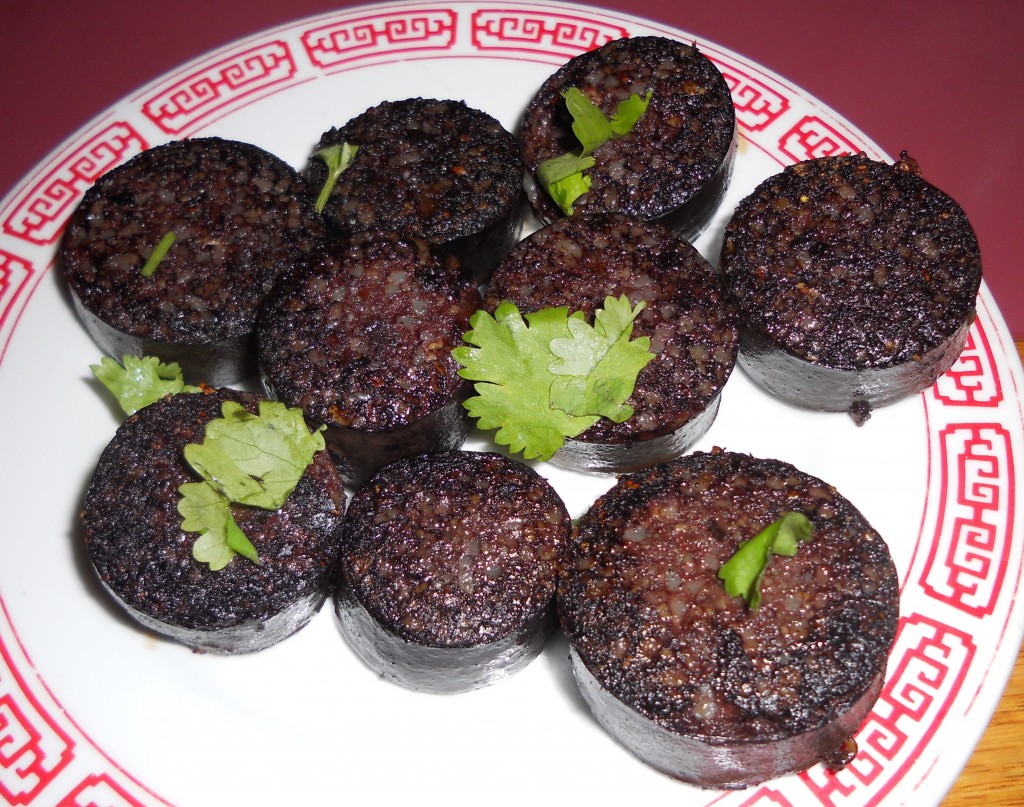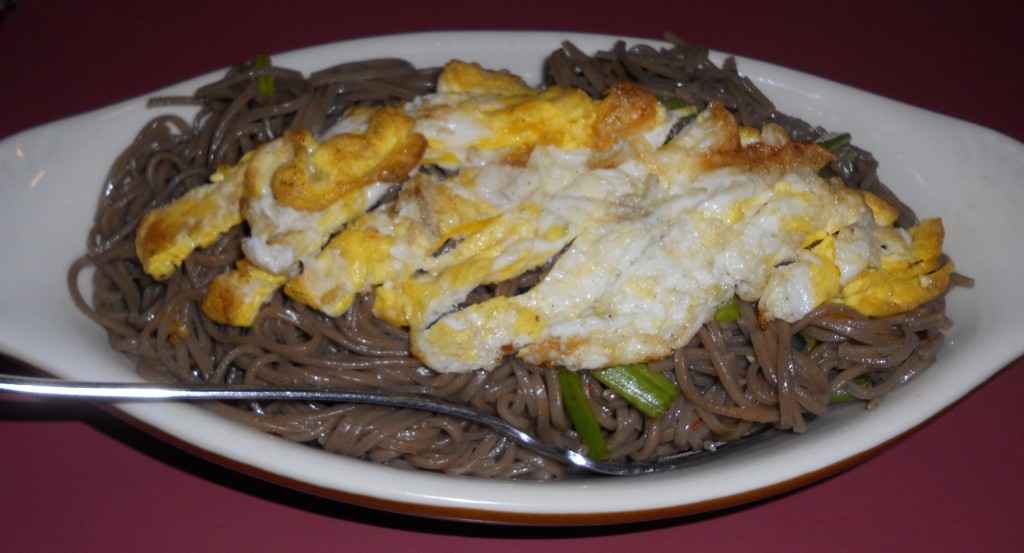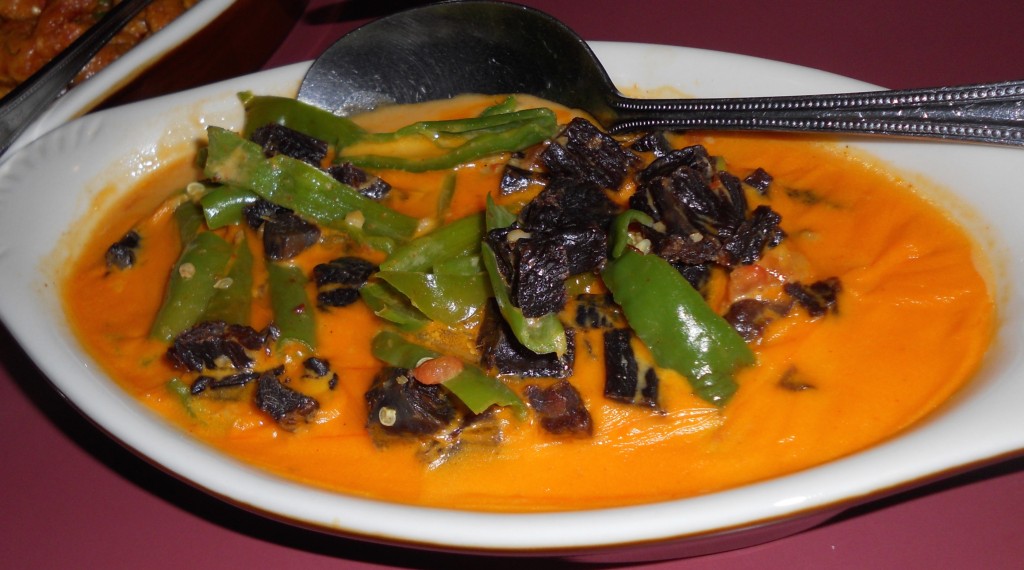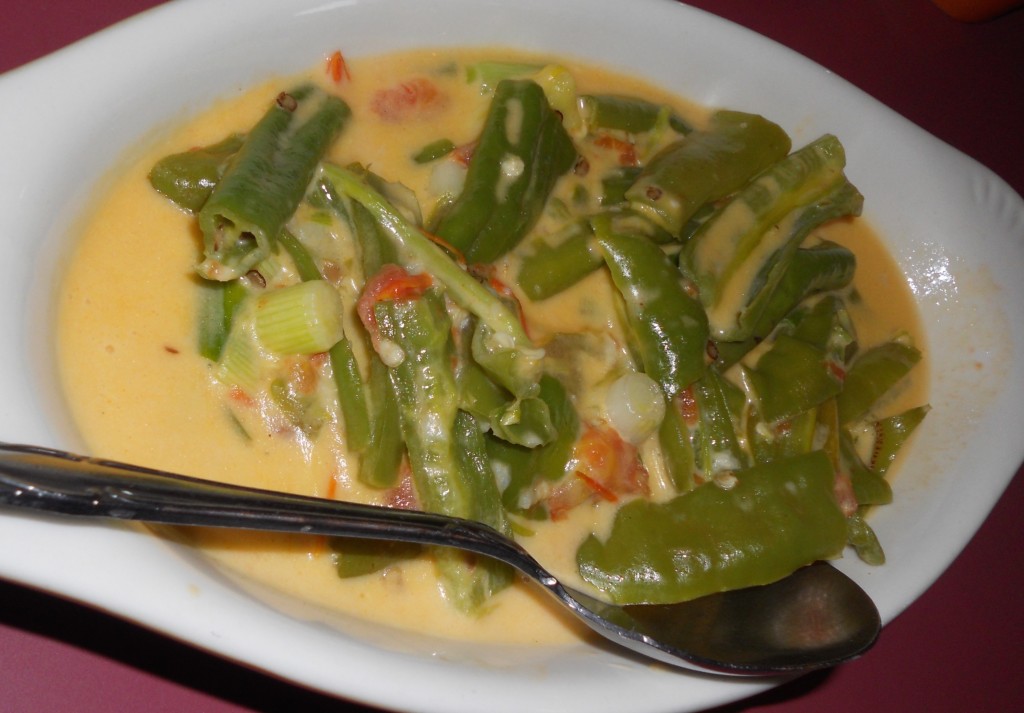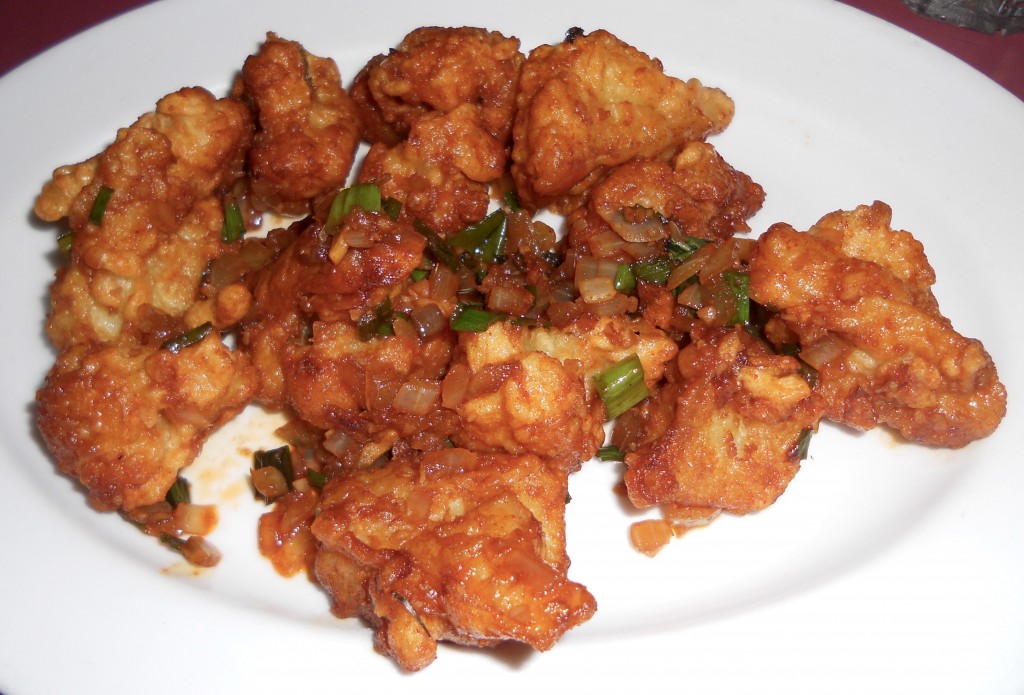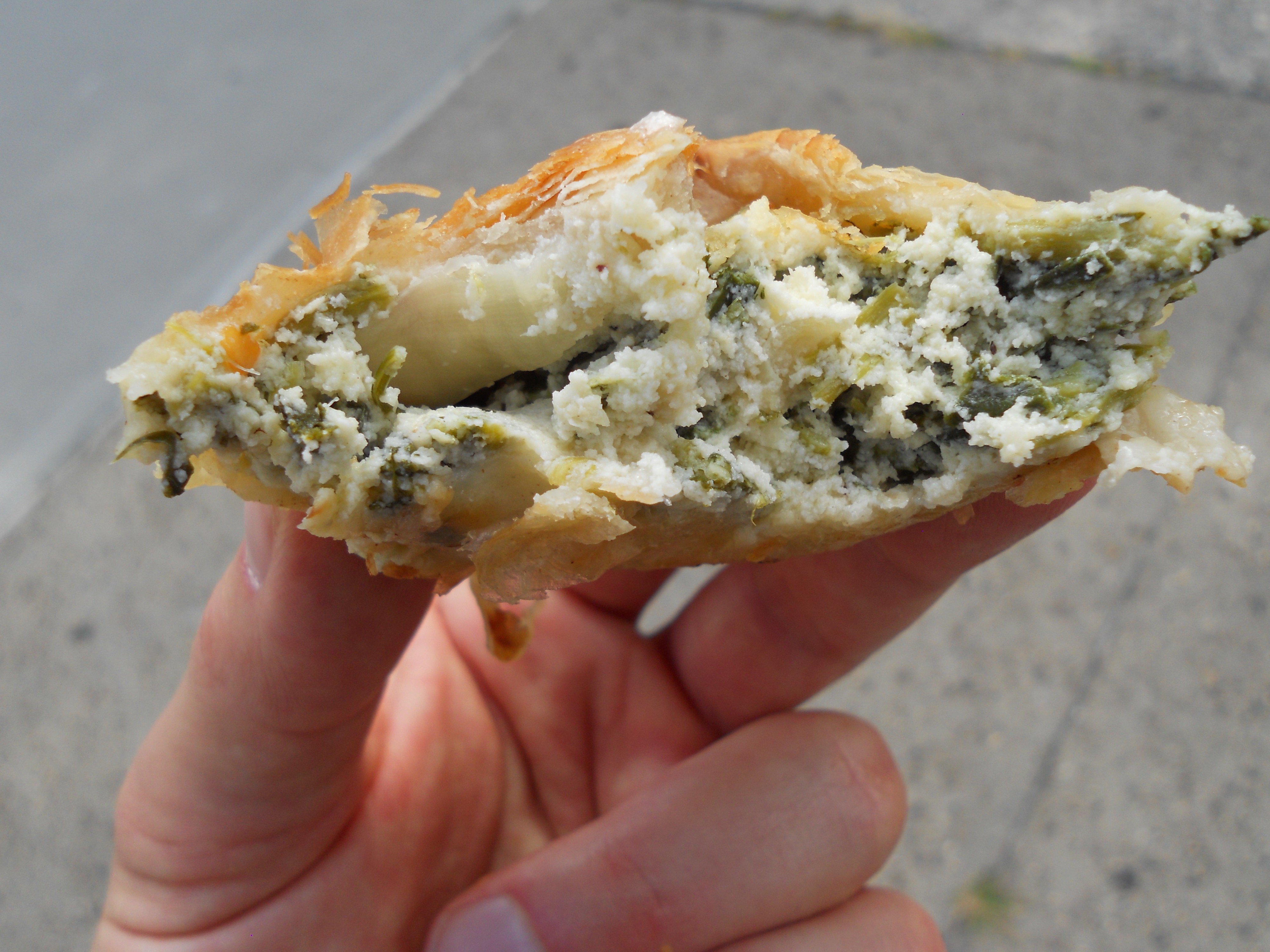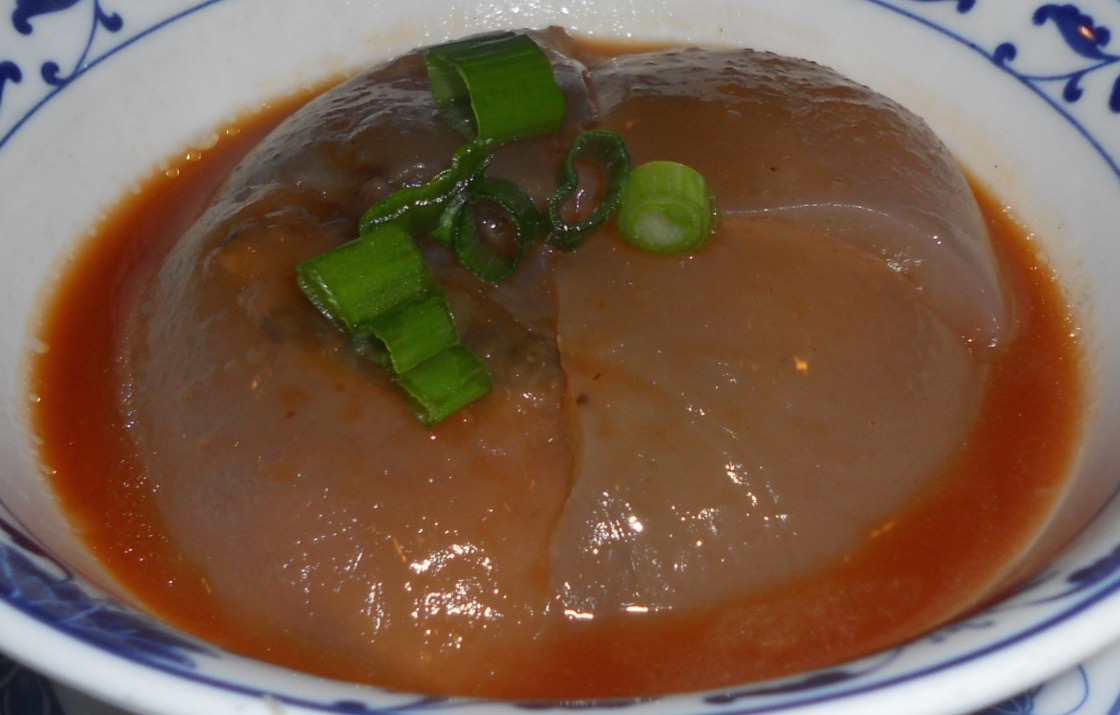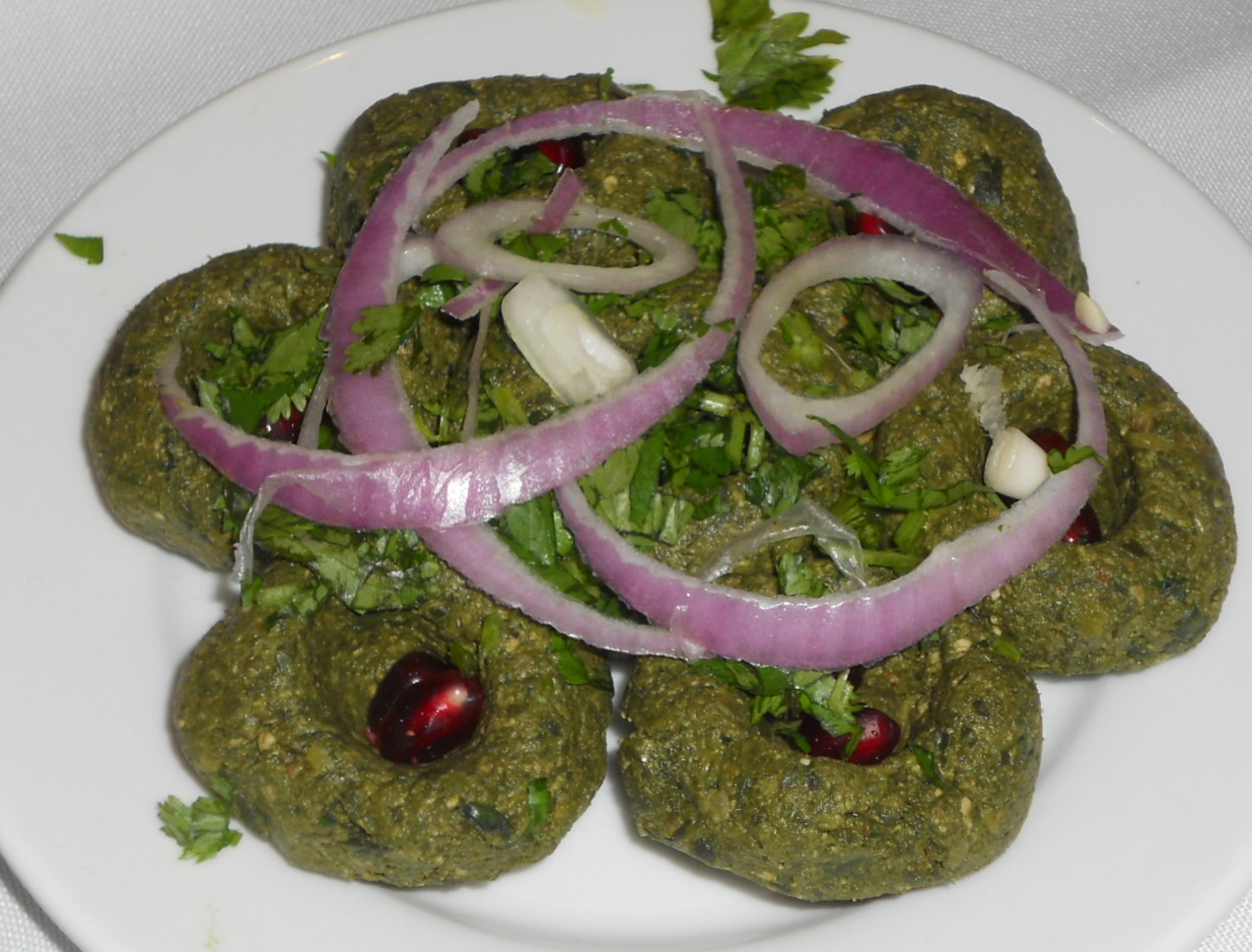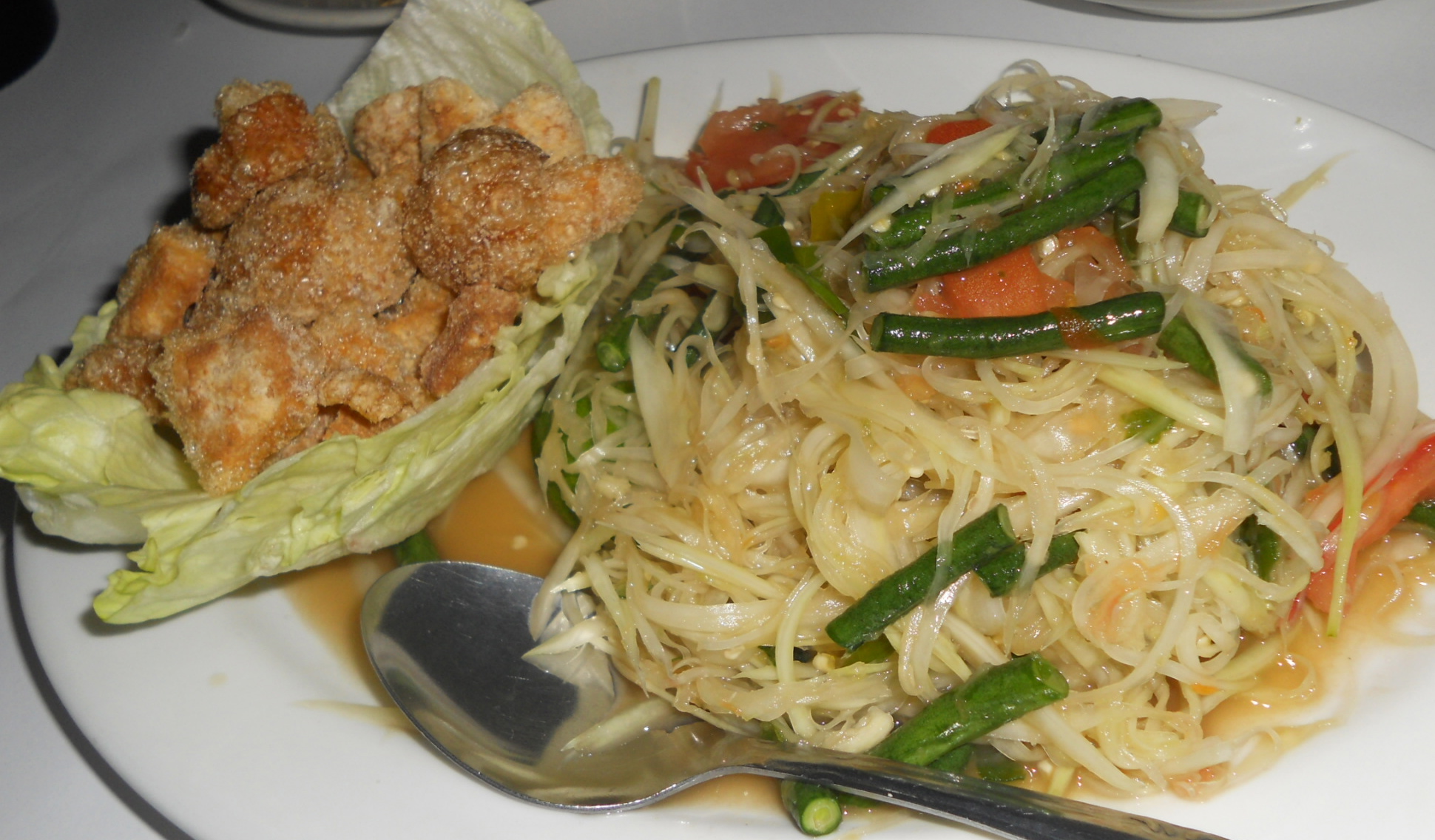So you know how sometimes you’re in a hurry, and you slam on the brakes at a stoplight after just barely missing your chance to run through the yellow light? And then it seems to take forever for the light to turn green again. And then you’re cranky? Like, just a little bit?
Well, that doesn’t happen in Bhutan, which is a nominee for the title of the world’s most fascinating small country. Bhutan is one of the very few nations in the world that has no traffic lights. Bhutan is also famous for its 1972 announcement that it doesn’t really care about Gross National Product, and would instead begin to measure Gross National Happiness.
Even Bhutan’s national dish is fascinating. (Warning: this may sound deceptively un-delicious.) Ema datsi (or ema datshi in some spellings) is traditionally made from yak cheese and hot peppers, served over Bhutanese red rice. As luck would have it, Bhutanese Ema Datsi is also the name of New York City’s only Bhutanese restaurant. And both the restaurant and its eponymous dish are more delicious than they may sound, even if yak cheese is awfully tough to find in the United States.
Like many “small country” restaurants in New York, Bhutanese Ema Datsi serves dishes from a mix of ethnicities; the Tibetan and Indian sections of the menu are just as long as the Bhutanese section. When the six of us (including the guy who should write your next theme song and a dolphin-chomping journalist) sat down, we immediately asked the charmingly soft-spoken server which appetizers were Bhutanese. He identified two for us: “cauliflower dry” ($5.99) – a tasty sauté of cauliflower, scallions, and hot peppers – and gyuma ($8.99), Bhutan’s version of blood sausage. The gyuma is stuffed with a roasted flour called tsampa, usually made from a mix of wheat and barley, that also appears in Mongolian butter tea. The gyuma is spectacular, served in crispy, fried rounds, with a nice hint of hot peppers; it was perhaps even better than the excellent Puerto Rican stuff, and blissfully avoided the blood sausage scourge of sweet, mushy, gritty bloodiness.
For our main dishes, the six of us shared six entrees. Three of the dishes were excellent, if not incredibly exotic-sounding: “fried chicken spicy monpa style”, consisting of chunks of pan-fried chicken with onion, chili, and garlic; phak sha paa thali, featuring chunks of sautéed radish and fresh pork, seasoned with a moderate dose of onions, garlic, and hot peppers; and puta, a vulgar Spanish word a simple dish consisting of buckwheat noodles with butter, green chilis, scallions, onions, peppercorns, and a fried egg ($7.99). If you’re dining with a pal who has an aversion to cheese or tripe or spice, these are three solid choices, and the fried chicken is particularly tasty.
We couldn’t resist trying the tripe, which I sometimes pretend is my new favorite thing. The Bhutanese version, called goep, was nicely spiced with garlic, onion, tomato, and chili powder, but it was a little bit on the chewy side, which isn’t necessarily a bad thing; a little bit more cooking, and it would have resembled the consistency of the tasty Korean fish cakes that I love.
The final two entrees were also the most gloriously cheesy. The sha kam thali ($9.99) featured chunks of dried beef and hot green chilis in an orange-colored cheese sauce; the restaurant’s eponymous ema datsi ($7.99) was slightly spicier, with the dried beef swapped for extra hot peppers and a lighter-hued cheese sauce. Both were irrationally delicious: we’re talking about hot peppers and maybe beef jerky, stewed in something that vaguely resembles a runny version of nacho cheese. That shouldn’t be good. But it was, and like at least one other NYC food blogger, I can’t for the life of me understand why it was so fantastic.
The answer is not yak. The charming owner, most likely attracted by the gigantic grins on our protruding bellies faces, came over a few times to chat. He explained that ema datsi is normally made from yak cheese, but yak udders, of course, are rarely utilized to their full potential in the United States. He also explained that the ema datsi is normally made from another type of hot pepper, hotter than Thai chilis. These were moderately hot – not a challenge for people with Capsaicin Machismo Syndrome (not to be confused with PMS, or Porcine Machismo Syndrome), but downright deadly to say, my Iowan relatives who are convinced that pickle relish is spicy.
So yeah: Bhutan’s royal family is convinced that Gross National Happiness is a better way to think about national success than Gross National Product. And I think they’re right: we all ate gross amounts of food, and then we were happy. See? It worked.
Bhutanese Ema Datsi
67-21 Woodside Avenue
Subway: 69th Street (7 train)


